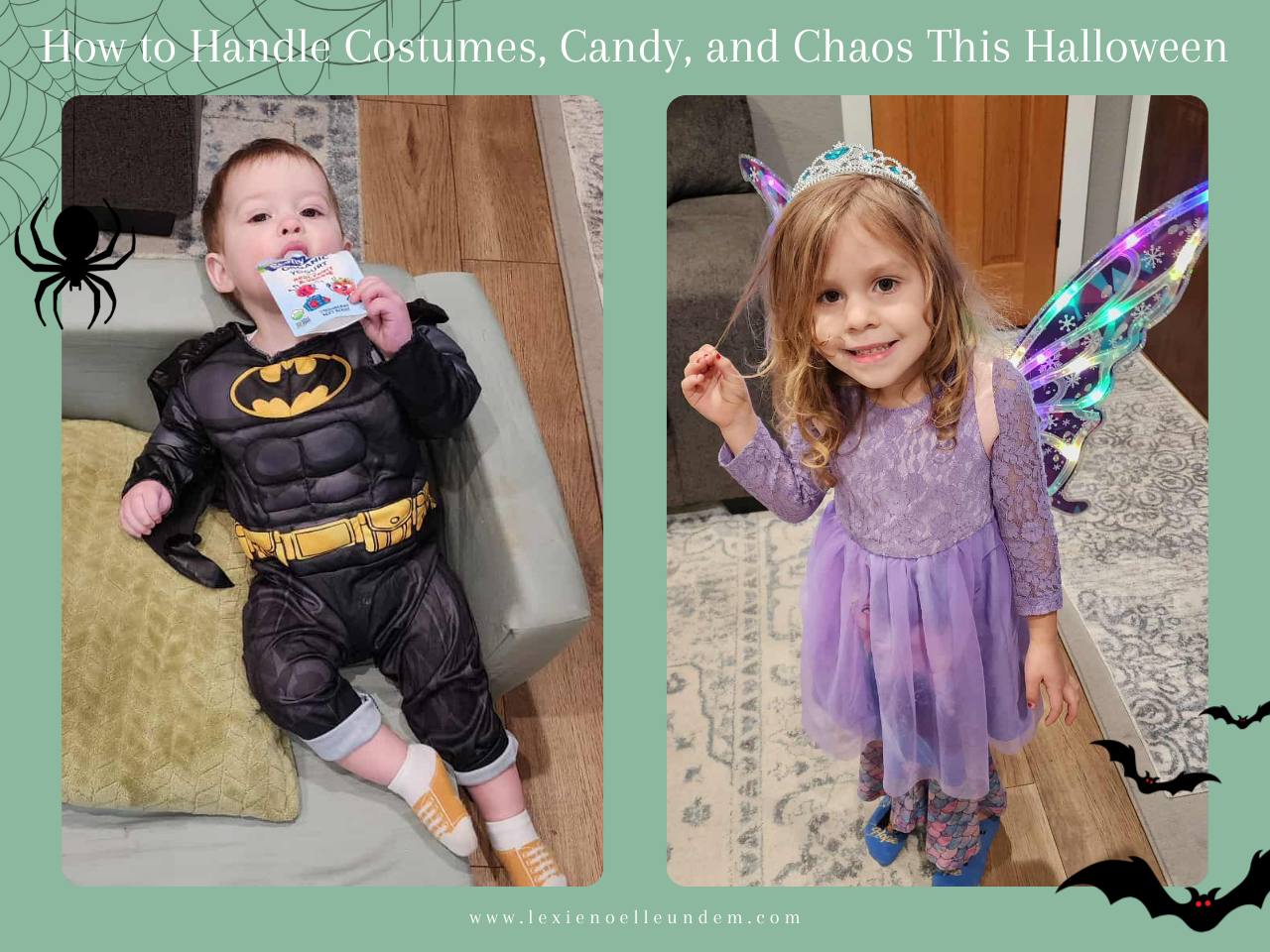Halloween is one of those holidays that sneaks up on parents. You’re scrolling through your phone one moment and suddenly realize it’s October 28th, your kid has no costume, and every store within 10 miles has already sold out of the “Spider-Man” in their size. Cue the panic. Add to that the sugar highs, the late bedtime, and the overstimulation of lights, decorations, and crowds, and you’ve got the perfect recipe for meltdowns for both kids and parents. But here’s the good news: there are plenty of things to do with kids for Halloween that don’t involve last-minute costume chaos or sugar-fueled mayhem. Whether you’re looking for calm, creative activities or action-packed adventures, we’ve rounded up the best things to do with kids for Halloween that will make this spooky season memorable for all the right reasons. From DIY decorations to neighborhood scavenger hunts, these things to do with kids for Halloween are designed to bring the fun without the stress. Ready to discover easy, affordable things to do with kids for Halloween that your family will actually enjoy? These are our favorite things to do with kids for Halloween that strike the perfect balance between festive fun and parental sanity.

But here’s the thing: Halloween doesn’t have to be a nightmare. With some preparation, flexibility, and a whole lot of empathy, you can help your child enjoy the fun while minimizing the chaos. Here are 10 ways to make this Halloween smoother, happier, and meltdown-free.
1. Choose Comfort Over Perfection

We’ve all been there: your child insists they want to be Elsa, but the costume they love is itchy, heavy, and clearly not designed for running door to door. One year, my friend’s daughter wore a princess dress for five minutes before declaring she hated it, threw it on the floor, and marched outside in pajamas instead. And guess what? She had the best time.
Kids care more about feeling comfortable than about Instagram-worthy costumes. So if your child refuses to wear the headpiece, cape, or glittery shoes, let it go. Pack a backup option (like a festive T-shirt or pajamas) in case they change their mind. When kids feel comfortable, they’re more likely to enjoy the night—and so are you. And, if you live somewhere like me, in North Dakota – there is a very real chance that you will need to plan the entire outfit around the ability to wear a snow suit or thermalware over or underneath the costume.
2. Start Small With Candy

A pillowcase full of candy is a dream for kids but a nightmare for parents. Carolynn is SO sensitive to sugar, and red dye, which HELLO, is in everything – unfortunately. Cue the sugar crash less than an hour later. Carolynn has gotten better over the years with lots of practice of sugar in moderation and one year my uncle offered to but all her candy from her for ten bucks, to which she replied $20, and they agreed – haha.
Instead of banning candy or letting them go wild, try a middle ground. Let your child choose two or three pieces on Halloween night. The rest can be sorted into a “treat basket” that you pull from slowly over the coming weeks. Some families even set up a “Switch Witch,” who trades candy for a toy or book. Making candy less of a battle helps kids learn balance—and spares you the meltdown when you inevitably say “no” to the fifth Reese’s. With Camden’s allergies, we are opting to find a lot of candy-free and allergy free options for Halloween.
3. Practice Trick-or-Treating at Home

If your child is shy, has sensory sensitivities, or just isn’t sure what to expect, role-playing can make all the difference. One mom I know set up a “trick-or-treat circuit” inside her house. She stood behind each bedroom door, and her kids knocked, said “Trick or treat,” and got a candy. The kids thought it was hilarious, and by the time they went out, they were confident.
This works especially well for toddlers, first-timers, or kids who freeze up around strangers. By practicing, you take away the unknown, which is often the scariest part for kids. Don’t push your kids to feel uncomfortable, and sometimes events like trunk or treat or trick or treating at the mall may be a safer option.
4. Set Realistic Expectations

It’s tempting to imagine the perfect Halloween night: your child happily skipping from house to house, posing for photos, and thanking every neighbor politely. The reality? Kids get tired, costumes get itchy, and houses decorated with jump-scare skeletons might send them running.
Don’t plan to hit every street and all the events in town. Instead, pick a few blocks and call it good. You know that if your child is having fun, great—but if the night ends earlier, that’s okay too. When you let go of the “perfect picture,” you’ll find the small moments are the most special: your kid giggling with a friend, proudly showing off their pumpkin bucket, or sharing a piece of candy with you.
5. Keep Bedtime in Mind

Halloween almost always runs past bedtime, and tired kids plus sugar equal disaster. If we even run CLOSE to bed time, it’s often meltdown city. Opt for earlier events or even weekend events before or after Halloween, depending on when the event is.
If your child has an early bedtime, plan your trick-or-treating route so you’re back home before they hit that wall. You can even do a quick “mini-Halloween” with a few neighbors earlier in the evening, our neighbors have “reverse trick or treated” where they bring small gifts or candy over when the kids were younger or it’s been pretty cold. Sticking somewhat close to their routine helps everyone avoid meltdowns and makes the next day smoother too.
6. Watch for Sensory Overload

Halloween can be overwhelming: flashing lights, creepy sounds, crowds of kids, and masks that make it hard to see. For some kids, this is thrilling. For others, it’s too much.
One mom told me her son, who has sensory sensitivities, wore noise-canceling headphones under his costume hood, and it made a world of difference. Another family brings a small flashlight because their daughter doesn’t like walking in the dark. These little adjustments mean your child feels safe—and when kids feel safe, they’re less likely to break down.
7. Bring Snacks and Water

Yes, you’re surrounded by candy, but candy isn’t food. I’ve even seen a little girl burst into tears halfway down the block. Her dad crouched down and asked what was wrong, and she said, “I’m just so hungry!” He pulled a granola bar from his pocket, and she perked right back up.
Between the excitement and running around, kids often forget they’re hungry or thirsty until it hits them hard. A simple snack and some water can save the night from unraveling. We like to keep Ripple Protein Shakes on hand for the kid – they are dairy-free which is an allergy win for us, and enough protein that the kids stay full the entire time!
8. Create a Safe Space at Home

Even after trick-or-treating, kids can still feel wound up or overwhelmed. Having a cozy “landing zone” at home helps. Blanket forts, a relaxing not-spooky movie, and dim lighting can help the transition from the crazy stimulation down to a quiet and restful night.
When the night ends, kids know they have a safe space to relax. This transition makes it easier to wind down, sort candy calmly, and ease back into routine. It also gives parents a chance to catch their breath.
9. Involve Your Child in the Decision

Kids love to feel like they have some control, especially on a night when everything feels big and unpredictable. Letting them choose which street to start on, which candy to eat first, or which friend to invite along gives them ownership of the experience.
We’ve even let our daughter choose her own pumpkin-carving design. It doesn’t have to be picture perfect, but allowing kids to feel part of the decision-making, they’re less likely to resist or rebel when you set limits elsewhere.
10. Remember the Fun (Not the Flaws)

At the end of the night, you may have a child crying because their pumpkin bucket broke, or you might realize you never got that “perfect” costume photo. But when you look back, those little imperfections often become the funniest, sweetest memories.
What might feel like a parenting nightmare- a toddler trick-or-treated in a Batman cape and cowboy boots—no pants, can turn into a family’s favorite Halloween story.
Kids don’t need perfect costumes, endless candy, or hours of trick-or-treating to have fun. What they’ll remember is the laughter, the time together, and the little moments of joy.
Last Thing Before You Take On Halloween…
Halloween doesn’t have to be chaos. By focusing on comfort, balance, and connection, you can create a night that’s memorable for all the right reasons. There will still be unexpected moments—because kids are kids—but when you approach the night with empathy and flexibility, you’ll find it’s much easier to handle the costumes, the candy, and the chaos.
So, this Halloween, take a breath. Snap the picture, even if the costume is falling apart. Let them eat the candy, but maybe not all of it. And remind yourself: it’s not about perfection, it’s about joy.








